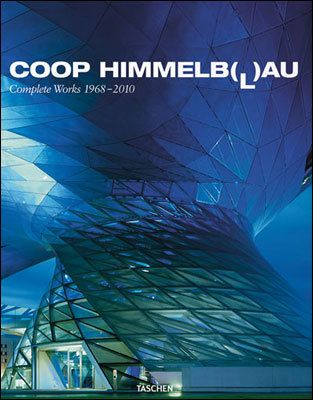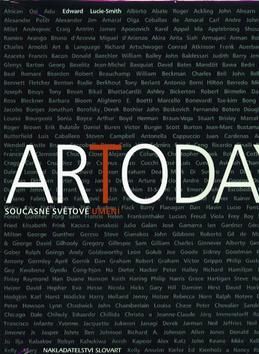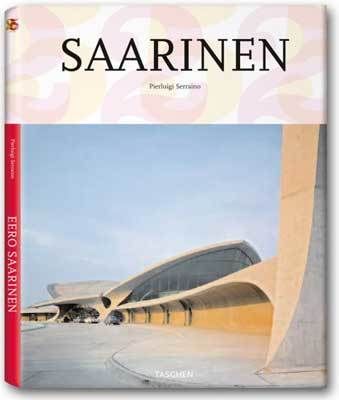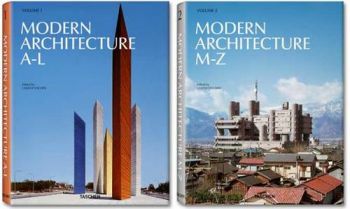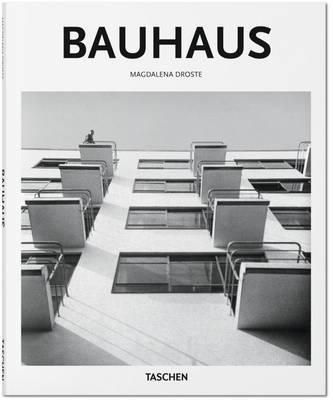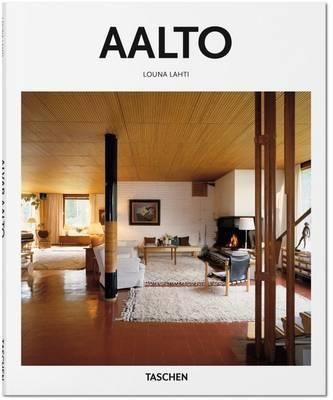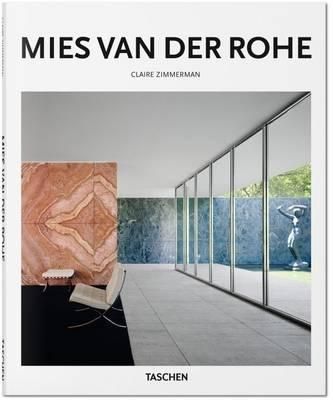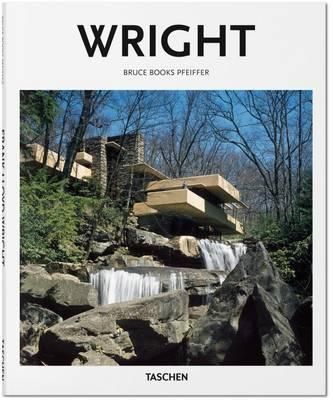Peter Gossel
autor
Coop Himmelbau
"Coop Himmelb(l)au is not a color but an idea of creating architecture with fantasy, as buoyant and variable as clouds." So the architecture group itself defines its name and design concept. Beginning with inflated bubbles and interactive installations in the 1960s, the group, consisting of the architects Wolf D. Prix, Helmut Swiczinsky and Michael Holzer, began to create harsh interventions in the urban context under the headline "architecture must burn." The designs of the buildings are like oversized sound boxes, with dancing silhouettes and collapsing lines that are always rushing and echoing. As one of only a few groups in those early times, they are among the leading international architecture offices today, justified by their outstanding expressiveness and professionalism.
Coop Himmelb(l)au's most well-known projects include the Rooftop Remodeling Falkestraße in Vienna, Austria (1988); the Groningen Museum, East Pavilion, in Groningen, Netherlands, (1994); the UFA Cinema Center in Dresden, Germany, (1998); the BMW Welt in Munich, Germany (2007); the Akron Art Museum in Ohio, USA, (2007) and the Central Los Angeles Area High School #9 of Visual and Performing Arts in Los Angeles, USA (2008).
Among the recent projects that Coop Himmelb(l)au is pursuing throughout the world are the Musée des Confluences in Lyon, France, the House of Music in Aalborg, Denmark, the European Central Bank's new headquarters in Frankfurt am Main, Germany, and the Dalian International Conference Center in China.
Eames
The creative duo Charles Eames (1907 1978) and Ray Kaiser Eames (1912 1988) transformed the visual character of America. Though best known for their furniture, the husband and wife team were also forerunners in architecture, textile design, photography, and film.
The Eames work defined a new, multifunctional modernity, exemplary for its integration of craft and design, as well as for the use of modern materials, notably plywood and plastics. The Eames Lounge Chair Wood, designed with molded plywood technology, became a defining furniture piece of the twentieth century, while the couple s contribution to the Case Study Houses project not only made inventive use of industrial materials but also developed an adaptable floor plan of multipurpose spaces which would become a hallmark of postwar modern architecture.
From the couple s earliest furniture experiments to their seminal short film Powers of Ten, this book covers all the aspects of the illustrious Eames repertoire and its revolutionary impact on middle-class American living.
About the Series:
Each book in TASCHEN s Basic Architecture Series features: an introduction to the life and work of the architect
the major works in chronological order
information about the clients, architectural preconditions as well as construction problems and resolutions
a list of all the selected works and a map indicating the locations of the best and most famous buildings
approximately 120 illustrations (photographs, sketches, drafts and plans)
Architektura 20. století
S podporou známych fotografov a použitím autentických obrazových dokumentov, vyše 460 foto, 150 kresieb, cez purizmus, monumentalizmus až bizarnosť. História, veľa foto. (260x200, 446 s., FB, MV)
Vypredané
44,12 €
46,44 €
Saarinen 25 kr
Eero Saarinen (1910-1961) was one of the 20th century's great visionaries, both in the fields of furniture design (he created the ubiquitous Knoll "Tulip" chairs and tables, for example) and in architecture. Among his greatest accomplishments are monuments that shaped architecture in postwar America and became icons in themselves: Washington D.C.'s Dulles International Airport, the very sculptural and fluid TWA terminal at JFK Airport in New York, and the 630 ft (192m) high Gateway Arch of St. Louis, Missouri. Marrying curves and dynamic forms with a Modernist aesthetic, he brought a whole new dimension to architecture.
Vypredané
10,97 €
11,55 €
Wright Complete Works Vol.1
Frank Lloyd Wright (1867-1959) is widely considered to be the greatest American architect of all time; indeed, his work virtually ushered in the modern era and remains highly influential today. His wide-ranging and paradigm-shifting oeuvre is the sub
ject of TASCHEN's three-volume monograph that covers all of his designs (numbering approximately 1100), both realized and unrealized. Made in cooperation with the Frank Lloyd Wright Archives in Taliesin, Arizona, this collection leaves no stone untur
ned in examining and paying tribute to Wright's life and work. From his early Prairie Houses (typified by the Robie House) to the Usonian concept home and progressive living architecture buildings to late projects like the spiral Guggenheim Museum in
New York and the development of his fantastic vision of a better tomorrow via his concept of the living city, all of the phases of Wright's career are painstakingly described and illustrated herein. Author and preeminent Wright expert Bruce Brooks P
feiffer highlights the latest research and gives fresh insight into the work, providing new dating for many of the plans and houses. A plethora of personal photos gives readers a feeling of what it was like to work in Frank Lloyd Wright's fellowship,
traveling each spring from Taliesin West to the old Taliesin complex in Wisconsin and returning the next fall to spend the winter in sunny Arizona again. This volume, Volume 1, covers the early Chicago years and the Prairie Houses, the period which
provoked a profound influence on European architects. Wright's architectural work during these early years was mostly residential, as it would be throughout his career, and from his earliest work, Frank Lloyd Wright demonstrated a knowledge of and re
spect for natural materials. In the ten years betweeen 1896 and 1906 he developed and perfected the so-called prairie house. Wright believed the architect should have complete charge of architectural design, and for him this meant interior furnishing
s as well as exterior landscape. He was not often given this freedom, but the 1908 Avery Coonley residence in Riverside, Illinois is one of the finest examples. With the administration building for the Larkin Soap Company (19031905) and the Unity Te
mple (1905) he could realize bigger commissions. In 1910 he worked on his famous publication Ausgeführte Bauten und Entwürfe for the German publisher Wasmuth, which brought his ideas to a worldwide recognition. The personal tragedy of 1914 brought a
shadow over his successful, but struggled life: A servant at Taliesin had set fire to the residence and murdered his mistress Mamah, her two children, a draftsman, and three workmen. But this could not stop Wright on his permanent search for a new ar
chitecture.
Vypredané
156,75 €
165,00 €
Architecture in the 20th century
This is a must-have architecture bible. It deals with a century of great buildings and their creators. This is the be-all-end-all reference work for architecture in the 20th century. From Frank Lloyd Wright to Antoni Gaudi to Frank O. Gehry to Shigeru Ban and all the best stuff in between, it's all here. The chronologically organized chapters put it all into perspective, illustrated by hundreds of large-format photos as well as a plenitude of drawings and floor plans. The biographical appendix covers all of the century's greatest architects, including today's new talents. This edition brings our classic title up to date with more color photos, more architect biographics, and new insights on recent architectural trends and movements.
Vypredané
32,25 €
33,95 €
Architect's Home
Autobiographical homes. This title deals with the houses architects design for themselves. The greatest challenge in designing homes is negotiating the delicate balance between aesthetics and the personal desires of the occupants. While it's important for the structure to reflect the vision and style of the architect, the client must ultimately feel at home beneath the roof. It is particularly interesting, therefore, to examine the homes that architects create for themselves. If houses reflect their owners' personalities, then architects' own homes are like autobiographies. Location, layout, style, lighting, artwork, furnishings - every detail adds color to the story. Each of these dwellings, presented A-Z by architect, speaks more about its designer than any other building possibly could.
Vypredané
32,25 €
33,95 €
Architecture A-Z Gold ju
Unlike most architecture encyclopedias, which tend to concentrate more on buildings and floor plans than their designers, this tome puts the architects in the spotlight, profiling individuals so that readers can get a clear overview of their bodies of work.
With more than 270 entries the book covers not only architects but also groups, movements, and styles from the 19th to the 21st centuries. Each architect's entry features a portrait and short biography as well as a description of important works, historical context, and general approach. The lavish illustrations include examples of the best architectural photography in the modern era.
The selected works in this two-volume edition form an overview of the modern movement, providing a context for modern architecture in today's world. The A–Z of Modern Architecture is a comprehensive resource that no architecture professional, fan, or student should be without.
Vypredané
41,75 €
43,95 €
Wright
A building by Frank Lloyd Wright (1867-1959) is at once unmistakably individual, and evocative of an entire era. Notable for their exceptional understanding of an organic environment, as well as for their use of steel and glass to revolutionize the interface of indoor and outdoor, Wright's designs helped announce the age of modernity, as much as they secured his own name in the annals of architectural genius. This meticulous compilation from TASCHEN's previous three-volume monograph assembles the most important works from Wright's extensive, paradigm-shifting oeuvre into one authoritative and accessibly priced overview of America's most famous architect. Based on unlimited access to the Frank Lloyd Wright Archives in Taliesin, Arizona, the collection spans the length and breadth of Wright's projects, both realized and unrealized, from his early Prairie Houses, through the Usonian concept home, epitomized by Fallingwater, the Tokyo years, his progressive "living architecture" buildings, right through to later schemes like the Guggenheim Museum New York, and fantastic visions for a better tomorrow in the "living city." Author Bruce Brooks Pfeiffer, who served as Wright's apprentice during the 1950's, discusses recent research on Wright and gives his own insights on these game-changing buildings.
Vypredané
78,38 €
82,50 €
Bauhaus
Founded in Weimar in 1919, the Bauhaus school developed a revolutionary approach that fused fine art with craftsmanship and engineering in everything from architecture to furniture, typography, and even theater. Originally headed by Walter Gropius, the Bauhaus counted among its members artists and architects such as Paul Klee, Lyonel Feininger, Wassily Kandinsky, Laszlo Moholy-Nagy, and Marcel Breuer. In 1930, Ludwig Mies van der Rohe took over as the leader, but soon after, in 1933, the Nazi government shut down the school. During its fourteen years of existence, Bauhaus managed to change the faces of art, architecture, and industrial design forever and is still hugely influential today.
Aalto
Finnish architect Alvar Aalto (1898-1976) was strongly influenced by both the landscape of his native country, as well as the political struggle over Finland's place within European culture. After early neoclassical buildings, Aalto turned to ideas based on Functionalism, subsequently moving toward more organic structures, with brick and wood replacing plaster and steel. In addition to designing buildings, furniture, lamps, and glass objects with his wife Aino, he painted and was an avid traveler. A firm believer that buildings have a crucial role in shaping society, Aalto once said, "The duty of the architect is to give life a more sensitive structure."
Mies van der Rohe
Ludwig Mies van der Rohe (1886-1969) was one of the founding fathers of modern architecture, and creator of the Barcelona Pavilion (1929), the Farnsworth House in Plano, Illinois (1945-1951) and the Seagram Building in New York (1954-1958). Famed for his motto "less is more," Mies sought a refined purity in architectural expression that was missing from the vocabulary of his Bauhaus peers. He aimed to build for those of modest income while also building economically and sustainably, both in technical and esthetic terms; the use of industrial materials such as steel and glass were the foundation of this approach. Though his stark forms and modern materials provoked some criticism, over the years many have tried - most unsuccessfully-to copy his original and elegant style. This book explores more than 20 of his projects between 1906 and 1967, from his early work around Berlin to his most important American buildings.
Wright
Widely thought to be the greatest American architect, Frank Lloyd Wright (1867-1959) was a true pioneer, both artistically and technically. At a time when reinforced concrete and steel were considered industrial building materials, Wright boldly made use of them to build private homes. His prairie house concept - that of a low, sprawling home based upon a simple L or T figure - was the driving force behind some of his most famous houses and became a model for rural architecture across America. Wright's designs for office and public buildings were equally groundbreaking and unique. From Fallingwater to New York's Guggenheim Museum, his works are among the most famous in the history of architecture.
Meier
Let there be light: The luminous modernism of Richard MeierEver since his self-proclamation as part of the New York Five, Richard Meier has risen through one top commission after another to the dizzy heights of architectural stardom. From Madison Square Garden to Shenzen, China, his sleek, luminously white modernism has created some of the most high-profile, and distinctive, buildings of the 20th and 21st centuries.Meier s portfolio is as varied as it is illustrious. He has worked with Roman treasures (the Ara Pacis Museum), seaside resorts (Jesolo Lido Village), civic centers (San Jose City Hall), and private clients in the Hamptons. On each project, Meier s hallmarks are careful grid plans, and expansive use of white surfacing and glass. The buildings are as much beacons of brilliance from the exterior as they are temples to clarity and purpose inside.This introductory book traces Meier s complete career to explore the making of a cult architect. With abundant images, we take in all his most famous projects, such as the Getty Center in Los Angeles, as well as his most recent works such as the OCT Shenzhen Clubhouse in Shenzhen, China and the Burda Collection Museum in Baden-Baden, Germany.About the series: Each book in TASCHEN s Basic Architecture series features: an introduction to the life and work of the architect the major works in chronological order information about the clients, architectural preconditions as well as construction problems and resolutions a list of all the selected works and a map indicating the locations of the best and most famous buildings approximately 120 illustrations (photographs, sketches, drafts and plans)
Vypredané
15,68 €
16,50 €
Architecture in the 20th Century
The architecture of the 20th century is distinguished by an astonishing diversity. Just as the clash of aesthetic and commercial ambitions nevertheless produced many a happy symbiosis, so the purist and the expressive, the monumental and the picturesque came face to face. From lofty "starchitects" to lesser-known names around the world, this chronological overview takes you to the heart of the ideas, trends, and transitions that defined the 1900s.
From Frank Lloyd Wright to Antoni Gaudi, Frank O. Gehry to Shigeru Ban and all the best stuff in-between, it's all here. Organized chronologically, the 31 chapters put it all into perspective, illustrated by hundreds of large-format photos as well as a plenitude of drawings and floor plans. The biographical appendix covers all of the century's greatest architects while celebrating today's new talents, and the lavish illustrations include some of the best architectural photography in the modern era.
For anyone interested in the zeitgeist and building design of the 20th century, this is your be-all-end-all reference work. The collection covers not only the architects but also the groups, the movements, and the styles that defined an era of construction. A must for all lovers of architecture!
Vypredané
62,65 €
65,95 €
Lacná kniha Architecture in the 20th century (-90%)
This is a must-have architecture bible. It deals with a century of great buildings and their creators. This is the be-all-end-all reference work for architecture in the 20th century. From Frank Lloyd Wright to Antoni Gaudi to Frank O. Gehry to Shigeru Ban and all the best stuff in between, it's all here. The chronologically organized chapters put it all into perspective, illustrated by hundreds of large-format photos as well as a plenitude of drawings and floor plans. The biographical appendix covers all of the century's greatest architects, including today's new talents. This edition brings our classic title up to date with more color photos, more architect biographics, and new insights on recent architectural trends and movements.
Vypredané
3,40 €
33,95 €
dostupné aj ako:
